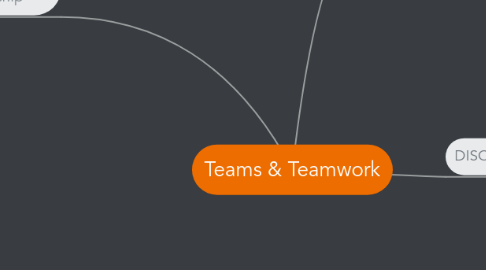
1. Distributed Leadership
1.1. There is no strong link between distributed leadership and two primary goals of the educational leadership field: school improvement and leadership development. p. 424
1.2. USAGE 1: A THEORETICAL LENS FOR LOOKING AT THE ACTIVITY OF LEADERSHIP
1.2.1. The idea that activity is distributed or “stretched over” multiple people, and the tools they use would be helpful to understand the practice of leadership in schools. P. 426
1.2.2. It has a similarity to sociocultural constructivism and teaching practices like the use of inquiry science modules p426
1.2.3. Using a distributed perspective to study educational leadership requires at least two important shifts in thinking. p. 426
1.2.3.1. First, researchers must de-center, but not ignore, administrators to investigate leadership at the level of a school, rather than an individual. p. 426
1.2.3.2. Second, when studying leadership as an activity that is distributed, rather than something inherent in a role like the principalship, Spillane and Gronn both argued that researchers’ attention needs to be focused on interactions or “concertive action” (Gronn, 2003, p. 35) among educators and their contextual factors. p.426
1.3. USAGE 2: DISTRIBUTED LEADERSHIP FOR DEMOCRACY
1.3.1. Several people in the field of educational leadership have interpreted the descriptive notion that the activity of leadership is practiced through the interaction of multiple individuals as a prescriptive message for leadership to be shared throughout the school in a more democratic fashion. p. 428
1.3.2. The above means that for distributed leadership to ‘work’ there can be a prescriptive, conscious message that to shear leadership is ‘OK’. GY
1.3.3. There is some discussion about whether DL has gained accesptance and popularuity because it is a way of democratising schools and decentralising leadership and by definition ‘power’. GY
1.3.4. There is some discussion as to whether DL can lead to negative results. The additional overhead of work necessary to share the load and make these decisions can become’stressful’ GY
1.3.5. One can conclude from these studies and reviews of literature that micropolitical considerations may be important for promoting distributed leadership in a normative sense, but whether shared or democratic leadership can lead to school improvement is unclear. p. 429
1.4. USAGE 3: DISTRIBUTED LEADERSHIP FOR EFFICIENCY AND EFFECTIVENESS
1.4.1. Another important idea that has emerged from the writings on distributed leadership is that since things like leadership activity and expertise are not focused or concentrated in one person, especially an administrator, then it is simply more efficient to ask nonadministrators to engage in leadership activities if they have the necessary expertise. p. 429
1.4.2. There was some more formal work done by the SAELP (State Action Educational Leadership Projects) in Kentucky where principalship was reworked to make their role more ‘do-able’ e.g. that meant creating new positions for teachers to lead instructional improvement and school-level business managers to help with everyday managerial functions. In the Massachusetts SAELP, reform designers believed distributed leadership was a vehicle to match subordinates with tasks they could perform well. p. 430
1.4.3. 'On the downside'- Redundant leadership function performance may deepen the implementation of reform p. 430
1.5. USAGE 4: DISTRIBUTED LEADERSHIP AS HUMAN CAPACITY BUILDING
1.5.1. The final prevalent usage of distributed leadership promotes the notion that by having multiple people engaged in leadership, these individuals will all learn more about themselves and the issues facing the school. Eventually, the collective capacity of the organization will increase to the point that the school can address its own shortcomings. p. 431
1.5.2. In other words, distributed leadership is defined as “a form of collective leadership in which teachers develop expertise by working together” and “equates with maximizing the human capacity within the organization” (Harris, 2004, p. 14). p. 431
1.5.3. Copland (2003) saw distributed leadership as a state of being in which schools have collective action toward collective goals, internal boundary spanning, and a reliance on expertise, rather than formal authority.
1.5.4. So far, the empirical results show that this formulation of distributed leadership has led to some collective capacity building, which is arguably leadership development, but there has been less school improvement than hoped for.
1.5.5. As a result, the prospects of creating widespread distributed leadership of this variety still appear to be slim, even though, among all three of the prescriptive definitions, this one may be best positioned to lead to school improvement.
